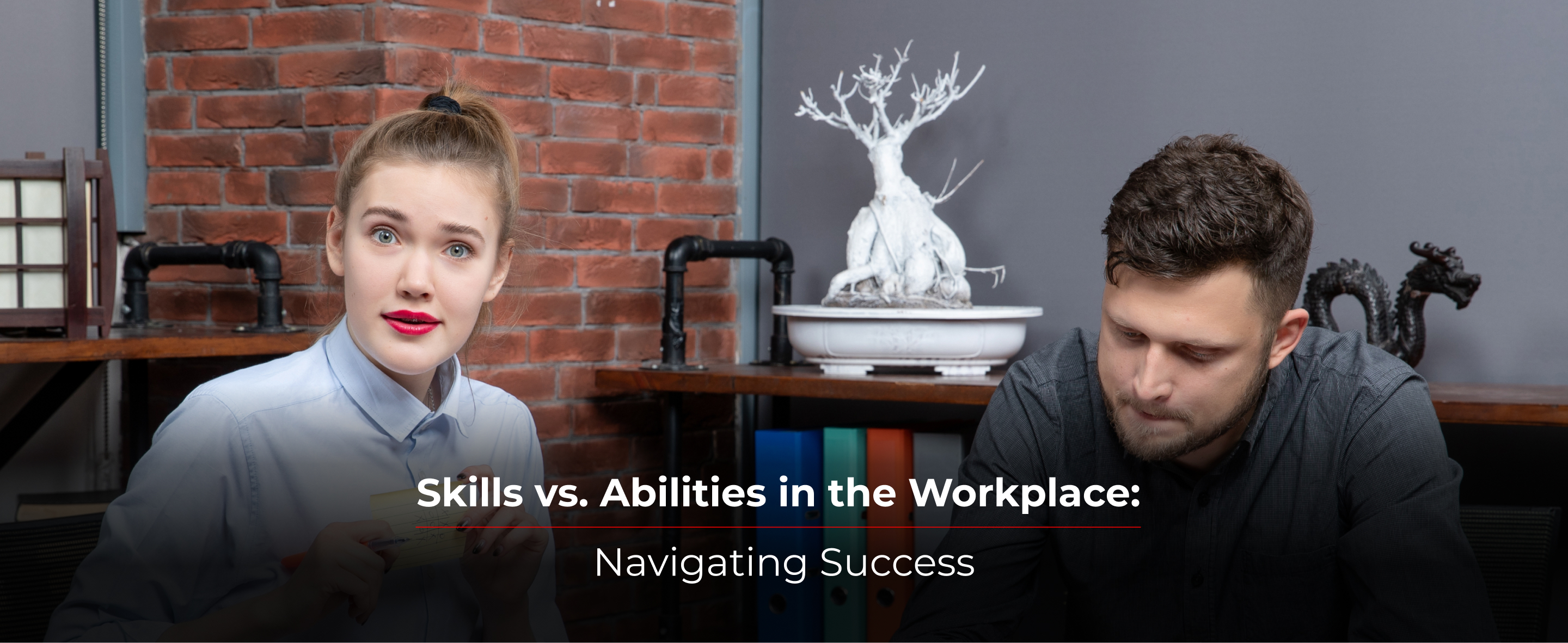
In today’s dynamic workplace, understanding the distinction between skills and abilities is crucial for maximizing employee potential and driving organizational success. While often used interchangeably, these terms have distinct meanings that impact hiring, employee engagement, and overall workplace productivity. This article explores the definitions, differences, and ways to foster both skills and abilities in the workplace to create a thriving and cohesive work environment.
What are Skills?
Skills are learned competencies or proficiencies that individuals acquire through training, education, or experience. They are specific to tasks and can be measured and developed over time. Examples of skills include technical skills like programming, soft skills like communication, and job-specific skills like project management.
What are Abilities?
Abilities, on the other hand, are innate traits or talents that an individual possesses. They are often natural and less teachable compared to skills. Abilities include cognitive capabilities, such as problem-solving and analytical thinking, as well as physical capabilities, like hand-eye coordination and dexterity.
Abilities vs. Skills in the Workplace
In the workplace, both skills and abilities play pivotal roles, but they influence job performance differently. Skills can be developed and enhanced through training and practice, making them essential for roles that require specific technical knowledge or procedural know-how. Abilities, being more inherent, contribute to an individual’s overall potential and aptitude for certain tasks.
Skills are crucial for job-specific functions and can be targeted through professional development programs. For example, a software developer must continuously update their coding skills to keep up with technological advancements.
Abilities, such as creativity and critical thinking, are fundamental to an employee’s capacity to adapt and excel in various situations. These are particularly valuable in roles that require innovative problem-solving and strategic planning.
Hire to Improve the Employee Engagement Process
Hiring the right mix of skills and abilities is essential to enhance employee engagement. By identifying the specific requirements of a role and matching them with the candidate’s profile, employers can ensure a better fit, leading to increased job satisfaction and retention.
Fostering Skills and Abilities in the Workplace
Creating an environment that nurtures both skills and abilities is key to sustaining employee growth and engagement.
Here are several strategies to achieve this:
Set Up a Comprehensive Onboarding Process
A thorough onboarding process helps new hires understand their roles, the company’s culture, and expectations. This initial training period is critical for developing the necessary skills and recognizing the abilities that will be vital for success.
Promote Open Communication
Encouraging open communication between employees and management fosters a supportive atmosphere where employees feel valued and heard. This transparency can lead to a better understanding of individual abilities and areas where skill development is needed.
Recognize and Reward Hard Work
Acknowledging employees’ efforts and achievements boosts morale and motivation. Recognition programs can highlight both the skills employees have honed and the unique abilities they bring to the table.
Foster Employee Growth
Providing opportunities for professional development, such as workshops, courses, and mentoring, helps employees build new skills and enhance existing ones. Supporting continuous learning is crucial for maintaining a skilled and capable workforce.
Promote the Concept of Community
Building a sense of community within the workplace encourages collaboration and mutual support. When employees feel part of a cohesive team, they are more likely to share their skills and abilities, contributing to collective success.
Give Employees a Sense of Purpose
Employees who understand the impact of their work are more engaged and motivated. Clarifying how their roles contribute to the company’s goals and values gives them a sense of purpose and direction.
Introduce Team-Building Activities
Team-building activities can uncover hidden abilities and foster the development of new skills in a relaxed and enjoyable setting. These activities strengthen team cohesion and improve overall workplace dynamics.
Promote Collaboration
Encouraging collaboration across departments and teams leverages diverse skills and abilities. Collaborative efforts often lead to innovative solutions and more efficient problem-solving.
Conclusion
Balancing skills and abilities in the workplace is essential for cultivating a productive and engaged workforce. By understanding the differences between these two concepts and implementing strategies to foster both, organizations can enhance employee satisfaction, drive performance, and achieve long-term success. Emphasizing continuous learning, open communication, and a sense of community will create an environment where both skills and abilities can thrive, benefiting both the employees and the organization as a whole.
View Jobs – https://www.shrofile.com/jobs.php
Let Shrofile Executive Search Find You Transformational Talent
Does your company need a dynamic and forward-thinking leader? Get in touch today and learn more about how we find and place transformational talent.
For more Updates
Website – www.shrofile.com
Facebook page – https://www.facebook.com/shrofile/
Twitter page – https://twitter.com/shrofile
Linkedin Page – https://www.linkedin.com/company/shrofile/
YouTube Page – https://www.youtube.com/channel/UChVfJqpTjx1dHJ2xq_dMtAw
Instagram Page – https://www.instagram.com/Shrofile/



